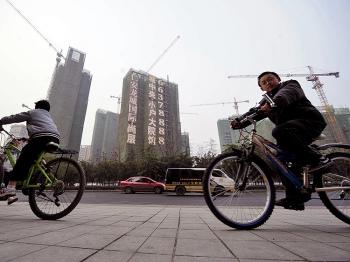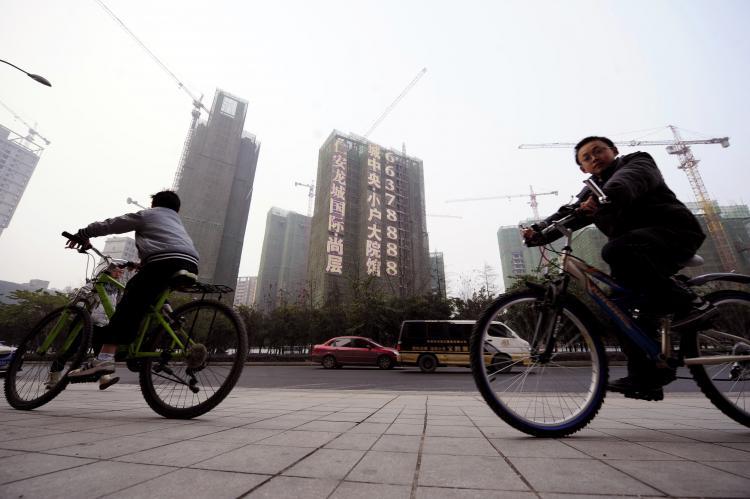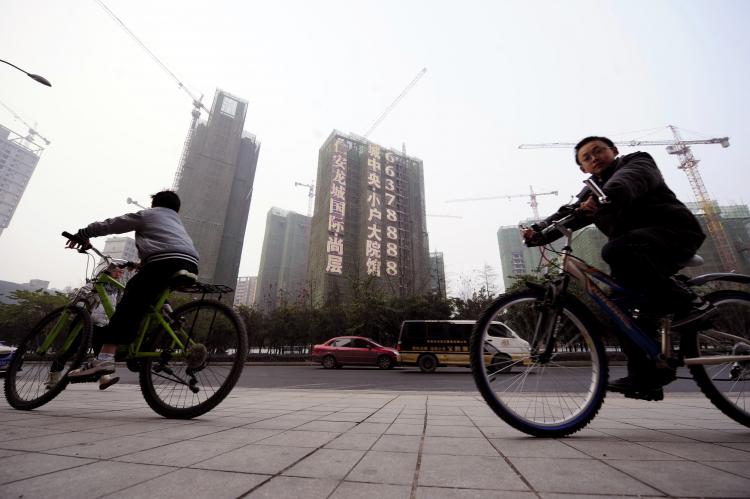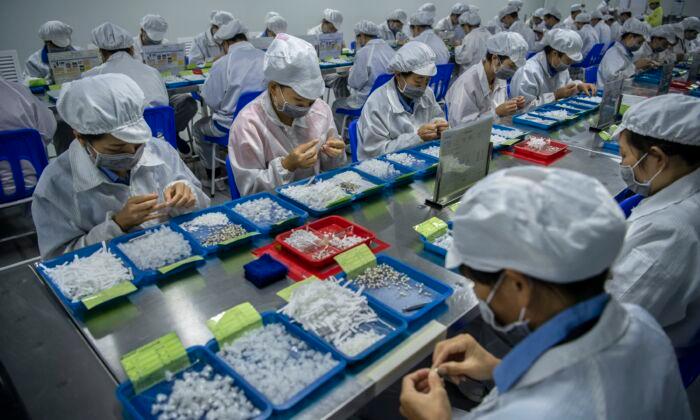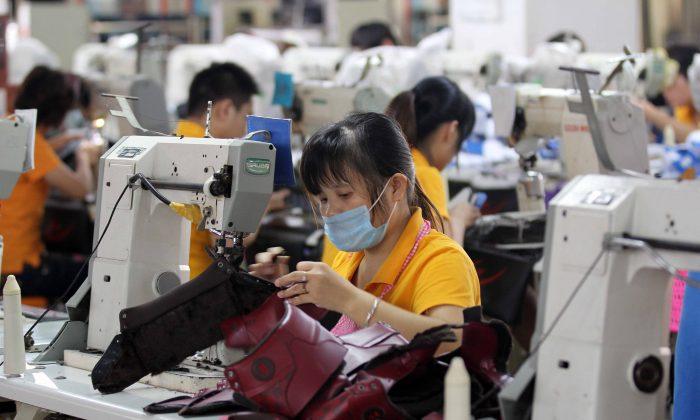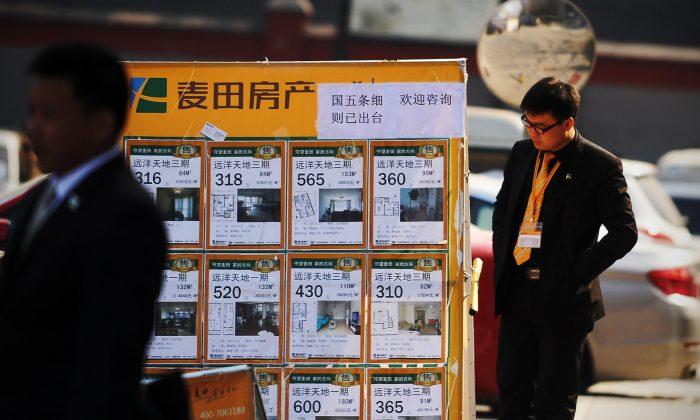The tax burden on China’s middle class is too high and the social services provided too few, according to recent reports and studies.
The “Tax Risk Research Report” published by Beijing’s China Central University of Finance and Economics on May 8 elaborated these and other findings, widely published in the Chinese media.
Dr. Ma Guangyuan, a syndicated columnist, wrote in the business magazine Caijing that there are three methods for calculating China’s tax burden: minimal, medium, and inclusive. The minimal calculation only includes government tax revenues, the medium takes into account the government budget revenue, while the inclusive sums up all government revenues, including the revenue outside the budget.
Dr. Ma believes that the inclusive method gives a real picture of the total revenues of the government. While officials record only 6.3 trillion yuan in revenue from taxation in 2009, the total revenue was more than 10 trillion yuan, Ma shows.
But Beijing often adopts the minimal method to calculate China’s tax burden. In a report published on the Ministry of Finance website in August 2010, from 2007 to 2009 China’s tax burden was 24 percent, 24.7 percent and 25.4 percent, which was lower than the average for developing countries. But this does not give the true picture.
Using the “China’s Fiscal Policy Report 2009/2010” published by the Institute of Finance and Trade Economics of the Chinese Academy of Social Sciences, the inclusive tax burden level calculates to 31.5 percent, 30.9 percent and 32.2 percent from 2007 to 2009 by treating the share of the total government revenue in GDP.
China can only rank as lower-income country, according to its current per capita income. The reasonable tax burden standard set by the World Bank for the lower income countries is about 23 percent.
The Central University of Finance and Economics report concludes: “China’s 2009 per capita income is only $3700. Our current tax burden level using the inclusive method to calculate is clearly too high. ”
The report also believes that social benefits dispensed don’t max the taxation taken away. Though marginal tax rates in many developed countries are higher than those in China, a large proportion of tax money is spent on education, social security and health care. As high taxes theoretically bring better benefits, citizens of those countries have less reason to resent their tax policy.
According to The Beijing News, the cost of running the bureaucracy in China is much higher than in developed countries. For example, in 2006 bureaucrats ate up 18.73 percent of the financial expenditure in China, while it was 2.38 percent in Japan, 4.19 percent in United Kingdom, 6.5 percent in France, 7.1 percent in Canada, and 9.9 percent in the United States.
But China’s expenditure on social security, health care and education, as calculated in 2009 were 7.63 percent, 2.7 percent and 4.52 percent respectively, rates much lower than in other countries.
High taxation also leads to a serious tax evasion problem in China.
Mr. Zeng, an owner of a shoe chain store in Guangdong Province, told The Epoch Times that businessmen agonize over the high tax burden. They have to maintain two sets of account books to survive.
Mr. Xie, who used to own a business in Guangzhou city, told The Epoch Times that keeping two sets of account books is very common in China. Due to fierce competition the profit margin is already very low. If companies paid taxes according to the real income, they couldn’t survive at all, he said.
There is not much change in sight, either. A series of new tax categories are set to come online next year, including social security tax, property tax, inheritance tax, and environmental tax.
A real estate tax is being piloted in Shanghai and Chongqing, and experts say that it will probably be enforced across the rest of the country soon.
Read the original Chinese article.
The “Tax Risk Research Report” published by Beijing’s China Central University of Finance and Economics on May 8 elaborated these and other findings, widely published in the Chinese media.
Dr. Ma Guangyuan, a syndicated columnist, wrote in the business magazine Caijing that there are three methods for calculating China’s tax burden: minimal, medium, and inclusive. The minimal calculation only includes government tax revenues, the medium takes into account the government budget revenue, while the inclusive sums up all government revenues, including the revenue outside the budget.
Dr. Ma believes that the inclusive method gives a real picture of the total revenues of the government. While officials record only 6.3 trillion yuan in revenue from taxation in 2009, the total revenue was more than 10 trillion yuan, Ma shows.
But Beijing often adopts the minimal method to calculate China’s tax burden. In a report published on the Ministry of Finance website in August 2010, from 2007 to 2009 China’s tax burden was 24 percent, 24.7 percent and 25.4 percent, which was lower than the average for developing countries. But this does not give the true picture.
Using the “China’s Fiscal Policy Report 2009/2010” published by the Institute of Finance and Trade Economics of the Chinese Academy of Social Sciences, the inclusive tax burden level calculates to 31.5 percent, 30.9 percent and 32.2 percent from 2007 to 2009 by treating the share of the total government revenue in GDP.
China can only rank as lower-income country, according to its current per capita income. The reasonable tax burden standard set by the World Bank for the lower income countries is about 23 percent.
The Central University of Finance and Economics report concludes: “China’s 2009 per capita income is only $3700. Our current tax burden level using the inclusive method to calculate is clearly too high. ”
The report also believes that social benefits dispensed don’t max the taxation taken away. Though marginal tax rates in many developed countries are higher than those in China, a large proportion of tax money is spent on education, social security and health care. As high taxes theoretically bring better benefits, citizens of those countries have less reason to resent their tax policy.
According to The Beijing News, the cost of running the bureaucracy in China is much higher than in developed countries. For example, in 2006 bureaucrats ate up 18.73 percent of the financial expenditure in China, while it was 2.38 percent in Japan, 4.19 percent in United Kingdom, 6.5 percent in France, 7.1 percent in Canada, and 9.9 percent in the United States.
But China’s expenditure on social security, health care and education, as calculated in 2009 were 7.63 percent, 2.7 percent and 4.52 percent respectively, rates much lower than in other countries.
High taxation also leads to a serious tax evasion problem in China.
Mr. Zeng, an owner of a shoe chain store in Guangdong Province, told The Epoch Times that businessmen agonize over the high tax burden. They have to maintain two sets of account books to survive.
Mr. Xie, who used to own a business in Guangzhou city, told The Epoch Times that keeping two sets of account books is very common in China. Due to fierce competition the profit margin is already very low. If companies paid taxes according to the real income, they couldn’t survive at all, he said.
There is not much change in sight, either. A series of new tax categories are set to come online next year, including social security tax, property tax, inheritance tax, and environmental tax.
A real estate tax is being piloted in Shanghai and Chongqing, and experts say that it will probably be enforced across the rest of the country soon.
Read the original Chinese article.
